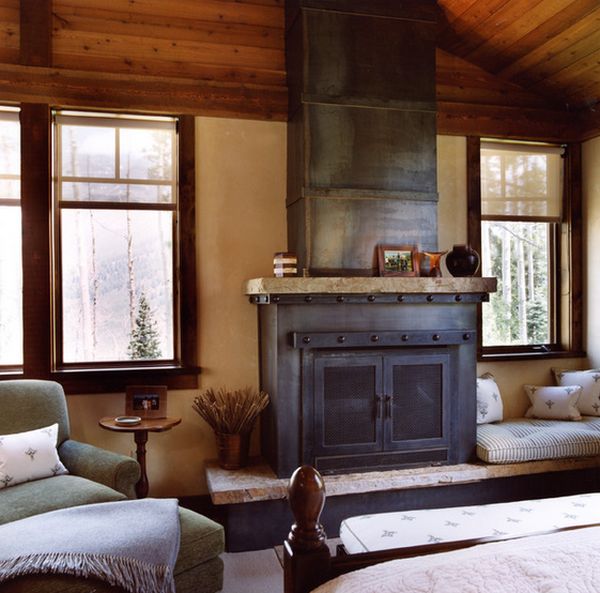Japanese design, rooted in its ancient culture, is highly admired and appreciated globally. It has captivated so many with its unique, profound beauty. So, it comes as no surprise that Japanese art and interior design continue to influence modern-day aesthetics.
Traditional Japanese kitchen design represents a combination of functionality and minimalism. These spaces are arranged in a way to eliminate clutter and maximize utility. Every item has a clear purpose and meaning.
The basis of Japanese design is the philosophy of Zen, with its key aspects being balance and beauty. Japanese interiors embrace simplicity, order, and natural grace. Because of their subtle charm and the harmonious atmosphere, these kitchen designs have made their way into homes worldwide.
Interested in learning how to add a hint of Japan to your kitchen design? Read on to find out how to replicate the authentic Japanese style.
Unobtrusive Japanese kitchen design reflects respect towards and a strong connection with nature, which is evident in the entire Japanese culture. The best way to show off the love of nature is to incorporate natural materials, earthy and neutral color palettes, and add some green, leafy plants.
Traditional Japanese plants such as bonsai and bamboo, or palms and orchids, are a great choice. Bamboo can be very decorative and add a touch of Japan to your kitchen design. A small indoor Zen garden is a nice way to include nature and achieve an authentic Japanese appeal.
When it comes to the floors, they are usually made of natural materials such as wood, ceramic, or stone. Wooden home elements are also used for walls, doors, and screen frames.
The color scheme reflects simplicity, harmony, and a natural flow. The palette is generally reduced to soft whites and calming creams favored by Japanese interiors.
To add a pop of color, combine beige and neutral colors with a splash of dark green, blue, orange, or deep red.
The Japanese cherish modesty and like to keep things simple.
This principle applies to kitchen tools as well as to furniture and decor – stick to the necessities you actually use. The essential cookware and tableware, a high-quality chef knife, a good quality seasoned board, and appliances you use on a regular basis are more than sufficient for a functional kitchen.
The Japanese-inspired kitchen may have an unfinished or industrial feel due to a few details and a minimalistic approach. Nevertheless, the overall result is a relaxing ambiance. Cluttering drawers and counters is a common mistake that tends to disrupt the balance and clean effect the Japanese aspire to.
The Japanese-style translucent sliding doors or screens are an authentic and essential element in a traditional Japanese home. Mainly used as room dividers, Shojis free up space by sliding back and forth with just a few centimeters in width.
Homes in Japan tend to be small by Western standards, which is why Shojis are an important part of interior design. These screens are usually made of fine translucent washi paper inside a wooden frame. There are now modern versions of the Japanese Shoji available in the form of glass panels inside a wooden grid.
Shoji screens allow natural light to gently come through, contributing to the nature-oriented and serene ambiance of a Japanese interior. Another way to bring a distinctive Japanese taste to a kitchen is to incorporate Shoji-inspired cabinet screens.
The sense of openness is achieved by using a simple, elegant design and empty spaces. Keep the counters clear and get familiar with alternative storage solutions.
Sleek, clean lines add to this airy feel, just like large windows or ceiling openings that allow natural light.
Japanese believe open spaces enable the room to breathe while making an impression of an airy and spacious place, even if it is not the case. When it comes to kitchen furniture, the same rule can be applied.
The Japanese favor open shelves over having upper kitchen cabinets. A few floating shelves on the wall are customary, with a minimalistic approach when it comes to styling the racks. They are used to stack everyday plates and cups, greenery, and decorative items. Just be careful not to overcrowd the racks.
Ditching the clutter and sticking to the bare essentials is in the heart of the Japanese interior style. As mentioned before – the Japanese prefer every single item to have its place and purpose.
Keep the unnecessary items off the countertops and islands. Although you may dread it, take some time and go through your cabinets and racks. Get rid of stuff you don’t use anymore, such as malfunctioning appliances you were reluctant to throw away.
Tidy and neat surfaces look inviting and make it easier to find what you’re looking for. Also, they make food prep a far more pleasant experience. Well-organized spaces are associated with mental clarity and focus. Mental health specialists have already recognized that staying in cluttered space can make us feel tense and mentally exhausted. Neat and clutter-free living is more than just improving the aesthetics of your home – it’s primarily about your wellbeing.
Japanese apartments are usually small, which is why smart storage solutions are common.
For example, hanging utensils and magnetic strips for knives are a clever way to keep countertops clear.
When it comes to lighting, choose between traditional lanterns or angular and modern lights. Opting for contemporary, straight-lined furniture with clean finishes and no excessive detailing instantly helps create a distinctive Japanese ambiance.
Japanese interior design is a mixture of traditional and modern elements resulting in a pure, uncluttered, and soothing atmosphere. As you can see, you don’t have to break the bank in order to implement the authentic Japanese kitchen design and replicate the Japanese lifestyle of peace and harmony in your home. The key is in keeping things simple and going for natural elements in order to create a calming, Zen-inspired appeal.




